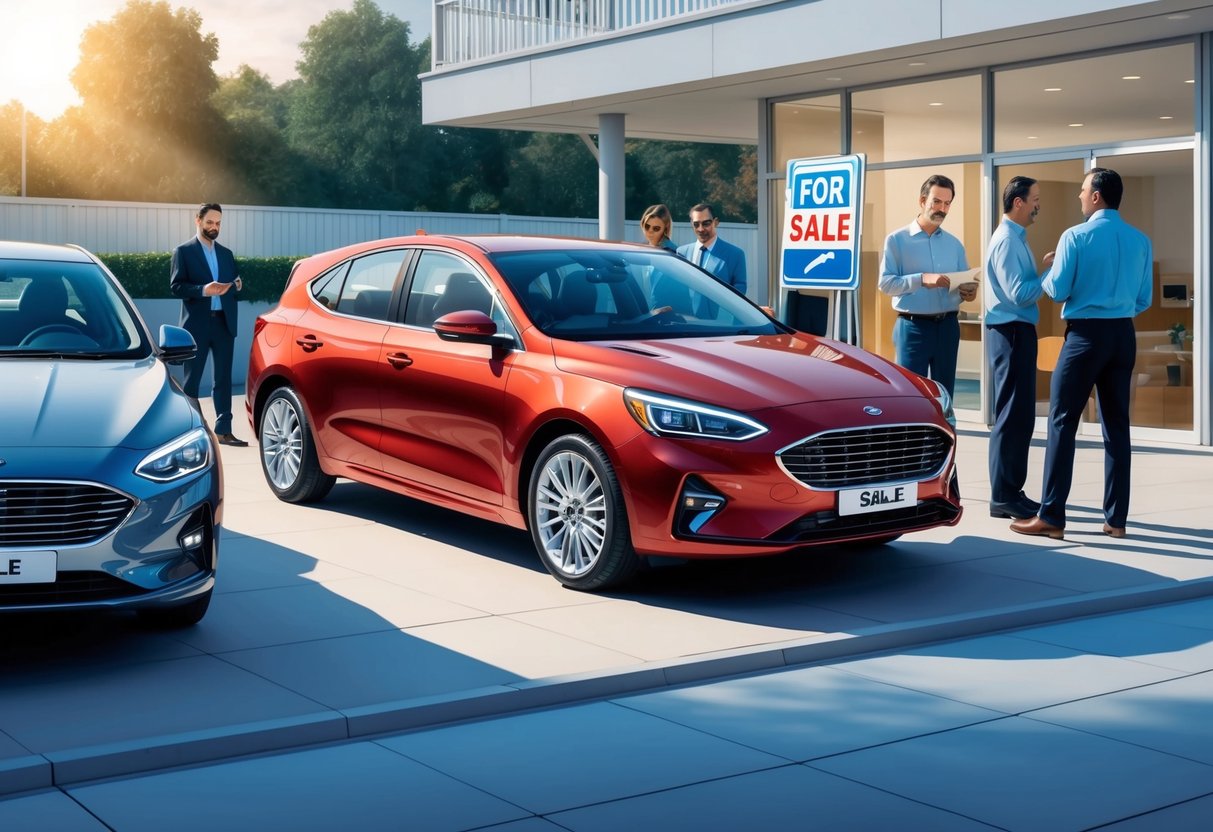
Finalizing the Sale and Transfer

Completing an auto sale requires close attention to detail and clear communication between buyer and seller. Ensuring all paperwork is accurate and the vehicle’s ownership is transferred properly protects both parties and helps maintain a smooth customer service experience.
Complete Necessary Paperwork
The seller must gather essential documents such as the vehicle title, bill of sale, and maintenance records. Some states require an odometer disclosure statement and a smog certificate.
Double-check local regulations or visit the state motor vehicles department website to confirm what is legally needed. A comprehensive bill of sale should list the car’s make, model, year, VIN, sales price, and both parties’ names and addresses.
Both parties must sign the document. It is wise to accept payment through a safe, verifiable method like cashier’s check or certified funds.
Review guidance on handling payments and paperwork from resources like this Kelley Blue Book guide, which highlights important steps for sellers.
Transfer Ownership Correctly
To transfer ownership, the seller should sign over the title to the buyer, noting the exact date of sale. In many states, a release of liability form needs to be filled out and submitted to the DMV to protect the seller from future issues.
Keep a copy of all documents for personal records. Depending on local requirements, it’s sometimes necessary to provide a valid emissions certificate or pass a vehicle inspection.
Sellers should remove license plates if required and cancel insurance coverage once the transaction is officially complete. More guidance about final steps for transferring a vehicle can be found in resources such as the eBay Motors selling process.
Frequently Asked Questions

Successful private car sales depend on thorough preparation, clear communication, and precise documentation. Sellers should take essential steps to attract buyers, protect against risks, and ensure a smooth transaction.
What are the most effective strategies for selling a car quickly and privately?
Taking high-quality photos of the car’s exterior, interior, dash, and engine can draw strong interest from buyers. Writing a detailed, honest ad that highlights unique features and recent maintenance improves buyer trust and increases inquiries.
Competitive pricing and prompt responses to questions help cars sell faster, as noted in this Kelley Blue Book guide.
How can I ensure I get the most money when selling my vehicle?
Start by researching the market value for your car’s make, model, year, and overall condition. Fixing minor cosmetic or mechanical issues can add value and make the vehicle more appealing.
Well-written ads with clear images and full maintenance records demonstrate care and add credibility, supporting a higher asking price. Detailed guidance on maximizing price can be found at I Will Teach You To Be Rich.
What are the necessary documents required to sell a vehicle privately?
Sellers typically need the vehicle title, a bill of sale, a valid form of ID, and service records. Emissions certificates or safety inspection documents may also be required depending on state laws.
Ensuring all paperwork is complete will speed up the transaction and prevent legal issues.
How can I safeguard myself from fraud or scams when selling my car for cash?
Arrange meetings in safe, public locations and verify a buyer’s identification. Accept payments using secure methods like cash or bank checks verified at the issuing bank.
Do not release the car until payment clears and all documents have been exchanged.
What are the advantages and disadvantages of selling a car to a dealership versus privately?
Selling to a dealership usually means a faster, simpler transaction and less paperwork. However, private sales often yield a higher sale price because dealerships offer wholesale value.
Private sellers must handle all negotiations, paperwork, and advertising themselves, while dealerships manage these steps but deduct profit for convenience.
What steps should I take to attract serious buyers and receive payment securely?
Clean and detail the car, and fix small issues. Take well-lit photos from multiple angles to make the listing stand out.
Write a clear, straightforward ad with price, mileage, and contact info. Respond quickly to inquiries.
Schedule test drives with qualified buyers. Use secure payment methods during the sale.
Further tips for appealing to buyers can be found at Car Nation Canada Direct and Car Blog UK.